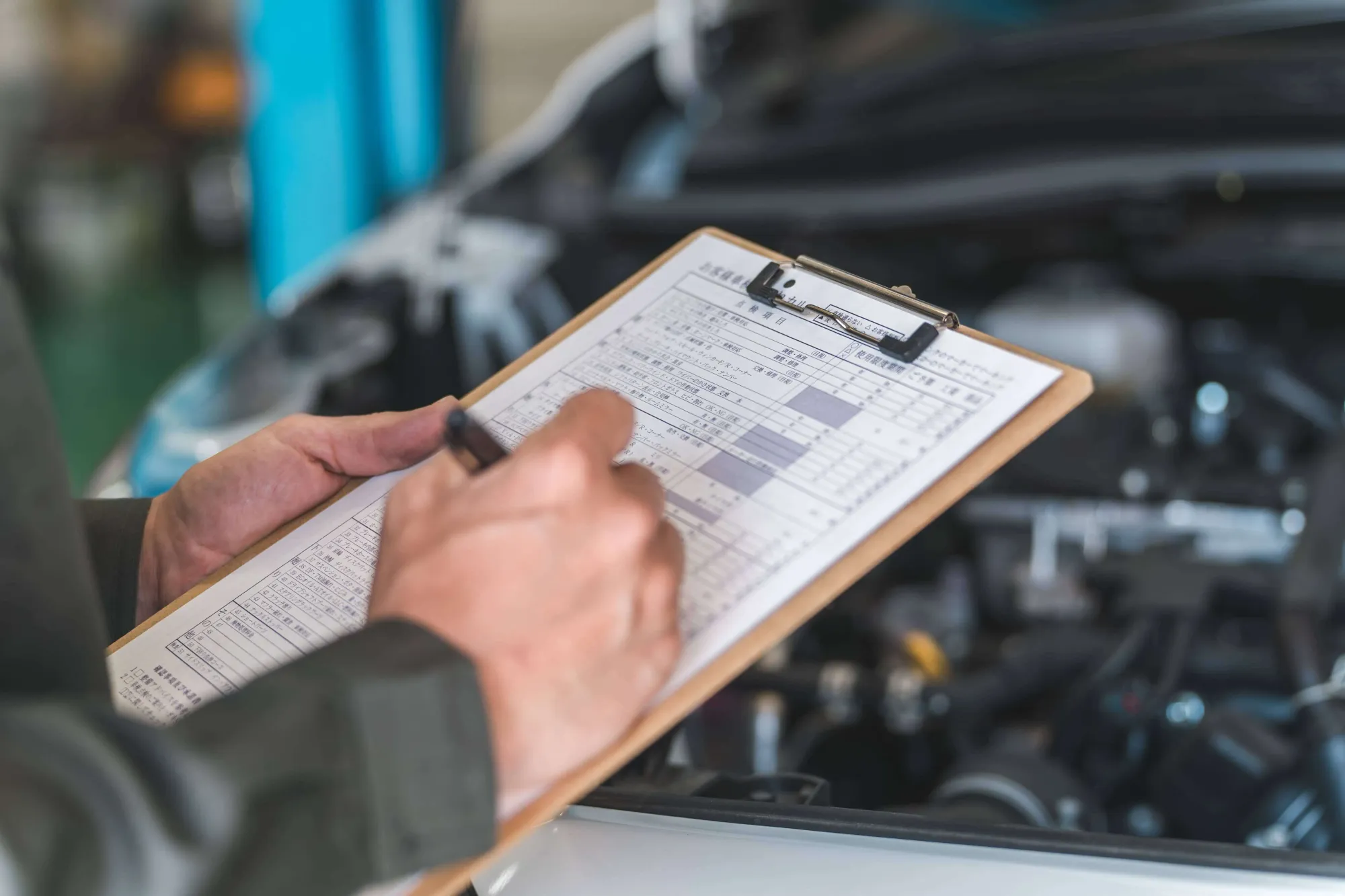If you are thinking of buying a used car, it is essential that you check certain parts of the vehicle to make sure you are making the right decision.
Checking the condition of the vehicle will help you to know:
- If they deliver what they promised.
- If the price is right or if you can haggle.
- Get an idea of what repairs you will need to make.
- Plan your budget taking into account the price of the vehicle plus the cost of repairs.
Ideally, the inspection should be done by an experienced mechanic, but if you do it yourself, don't forget to take a torch, wipes to check the engine oil and a checklist of all the items to be checked, which we have listed below.
Here’s the checklist for buying a used car from a dealer or a private seller.
Check the exterior
At a glance we can check certain elements of the exterior:
- Condition of the bodywork. Look for paintwork damage, dents, dings, dents, scratches and rust.
- Check that the side panels are aligned. If they are not, it may be a sign that the car has been involved in an accident.
- Make sure all windows and car windowsare in good condition. If there are any cracks, they should be repaired as a matter of urgency.
- Check that the headlights and tail lights are working and illuminating properly, as well as the hazard lights and hazard warning lights.
- Check the condition of the tyres. If tyre tread is less than 3 mm, they should be replaced soon.
- Make sure the locks and remote control are working properly.
- Windows, doors and boot should open and close smoothly.
Engine condition
Take the time to check that the heart of the vehicle is working properly. To do this:
- Open the bonnet while the car is running and let it idle for a while.
- Pay attention to any noises.
- Make sure there are no leaks or drips of fluid or oil.
- If you see a clean engine, it is a good sign.
- Check the oil dipstick for a dark colour.
- Check that the brake fluid is at the proper level. If you can't see it with the naked eye, insert a clean dipstick to measure it. It should be clear and slightly yellowish in colour. If it is brownish, it is a sign that it needs to be changed.
- Watch for strange smells while the engine is running.
- Check the exhaust pipe. Emissions should not be blue (engine burning oil) or black (excessive oil consumption).
- Check that battery terminals are free of corrosion.
- Make sure belts and hoses are not worn or cracked.
Transmission and clutch
Check that the clutch operates correctly when changing gear, does not make unusual noises and slips correctly.
Electrical system
- Check that the battery voltage is around 12.7 with the engine off. If it is lower, try driving for a while and then check again.
- There should be no corrosion or damage to the vehicle's electrical connections.
Brakes and suspension
- Check the brake discs and pads for excessive wear. If they are, they should be replaced.
- To make sure the suspension is good, check that the vehicle rests level, that all corners bounce in the same way and that there are no squeaking noises.
Driving
This step is vitally important to detect possible damage.
- While driving, avoid playing the radio or talking too much, to be aware of any unusual noises.
- If possible, remove any air fresheners to detect unusual smells.
- Pay attention to the vibration of the steering wheel, resistance to turning and whether it tends to pull to one side or the other.
- Try driving on the motorway, in town and when reversing into a parking space.
- Check the braking - does it respond quickly or does it take a long time to brake?
- Have any hazard lights come on?
- While driving, does the car tend to pull to one side?
- The pedals should have the correct firmness.
Vehicle interior
From the inside, check that all the buttons on the centre panel are working properly: indicators, windscreen, windscreen spray, hazard warning lights, radio, air conditioning, heating, locking and unlocking of doors and boot, electric windows, glove box, etc.
You should also check that the seats, seat belts and anchorages are in good condition.
Other things to check
In addition to all of the above, it is essential to check:
- Vehicle documentation
- Mileage
- Chassis number
- Vehicle handbook
- Set of keys
- The owner can provide a copy of the vehicle's logbook, and you can check whether the seller's details match the data in the logbook.
- You can request a detailed report of all repairs that have been made.
Conclusion
Checking a used car before buying it is essential to make sure you are making the right decision.
As you may have noticed, inspecting the condition of a vehicle can take a long time.
Don't rush and take your time.
And remember that if the seller's offer doesn't match reality, you can offer a lower price.
